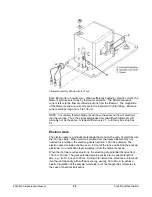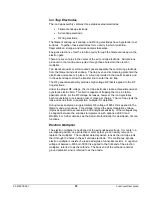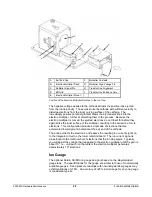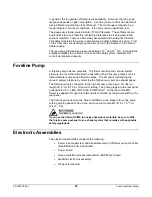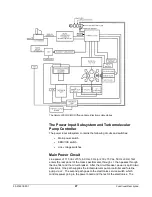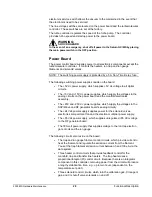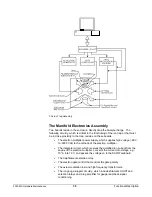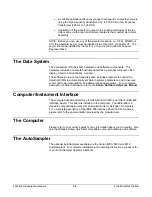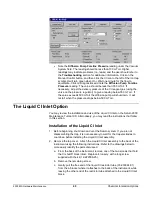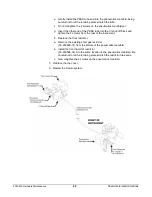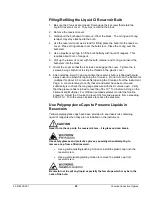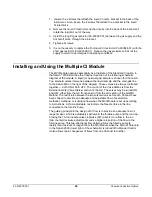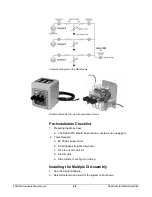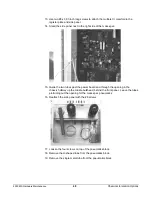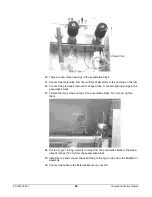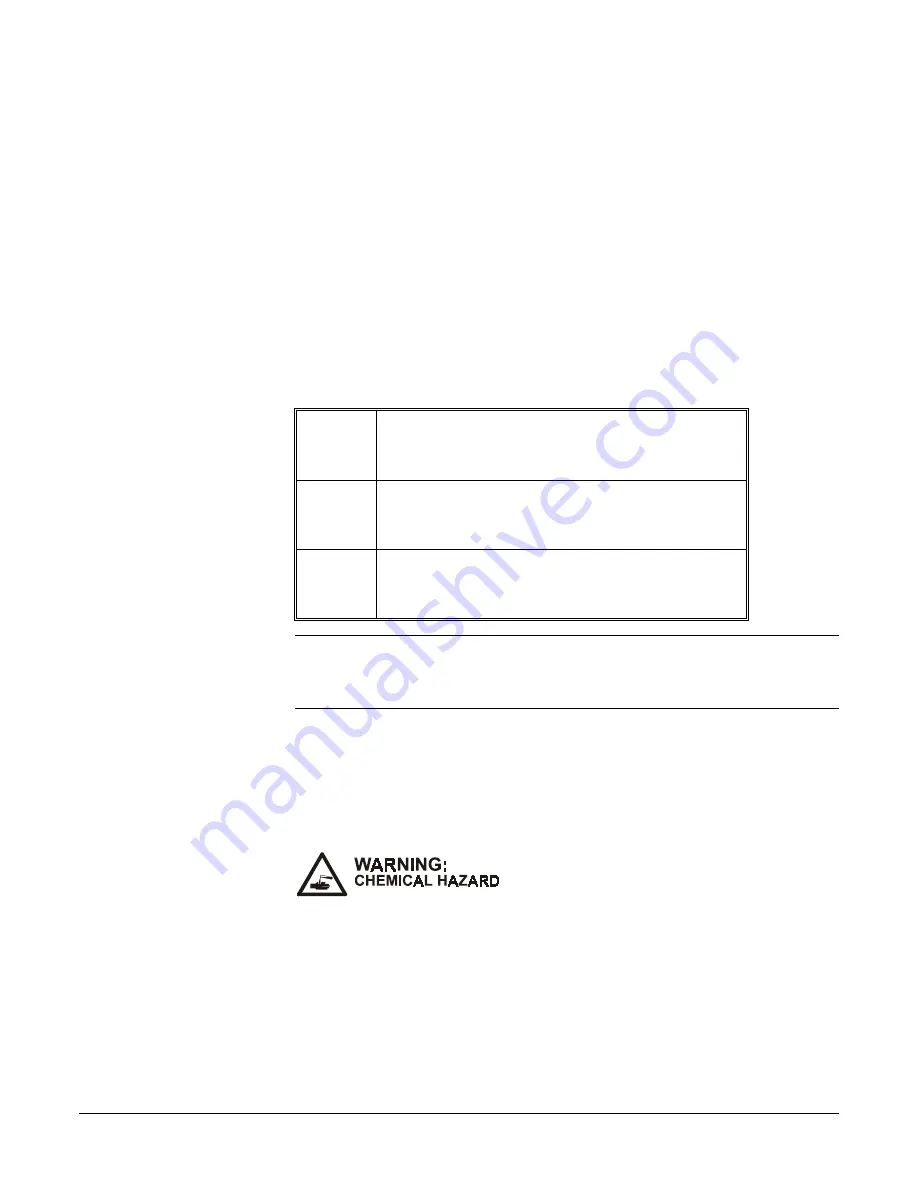
2000 MS Hardware Maintenance
34
Chemical Ionization
Options
CI Reagent Gas Requirements
These paragraphs give the requirements for the reagent gases used for CI
operation with Saturn GC/MS. The following reagent gases are recommended:
methane, isobutane, and ammonia. Other reagent gases can also be used
successfully with the Saturn GC/MS.
We recommend that you use a high-purity reagent gas for maximum sensitivity
and good spectral quality. Impurities in the reagent gas may limit the number of
sample ions that can be formed, thus reducing spectral sensitivity. In addition,
impurities may react with sample ions, thereby creating confusing mass spectral
data.
The amount of reagent gas consumed during CI operation is very low (typically 1
to 2 mL/minute). We recommend that you use a K size gas cylinder of the
selected reagent gas.
The requirements for the recommended gases are as follows:
Methane
Methane should have a purity of 99.99% or better. Use a
gas cylinder with a two-stage pressure regulator that has a
stainless steel diaphragm and maximum inlet pressure of
15 psi (1 bar).
Isobutane
Isobutane should have a purity of 99.99% or better. Use a
gas cylinder with a two-stage pressure regulator that has a
stainless steel diaphragm and maximum inlet pressure of
15 psi (1 bar).
Ammonia
Ammonia should have a purity of at least 99.99% and be
anhydrous grade. Use a gas cylinder with a two-stage
pressure regulator that has a stainless steel diaphragm and
maximum inlet pressure of 15 psi (1 bar).
NOTE: Gases other than methane, isobutane, or ammonia can be used
successfully as CI reagent gases with the Saturn GC/MS. For assistance in
selecting and using other reagent gases, please contact your Varian Customer
Support Representative.
The CI reagent gas should contain less than 1 ppm of water. Water in the CI
reagent gas may interfere with CI operation.
Copper or stainless steel gas lines should be used for methane or isobutane.
Stainless steel lines should be used for ammonia. All gas lines should be free of
oil (and other contaminants) and preferably flame dried. If possible, use the pre-
cleaned copper tubing from the GC Start-Up Kit.
DO NOT flame dry the reagent gas lines with CI reagent gas present.
Setting Up the CI Reagent Gas Supply
Use the following procedure to set up the CI reagent gas supply.



